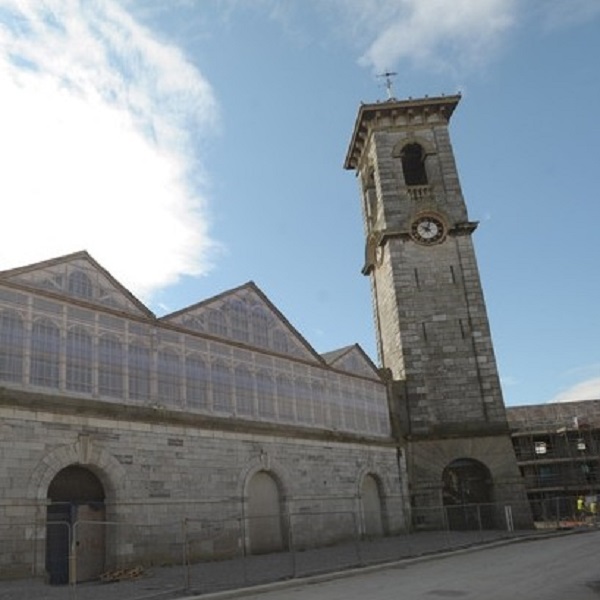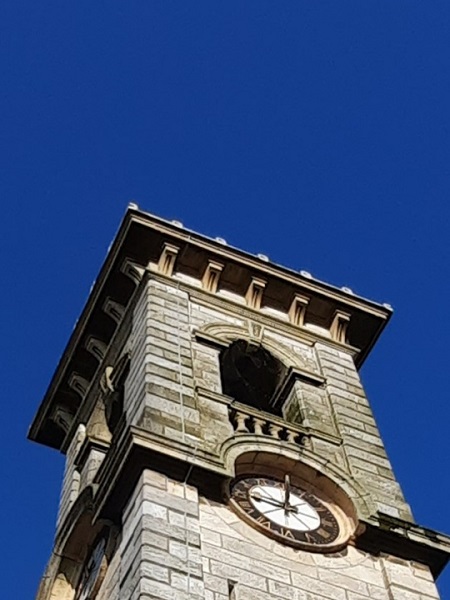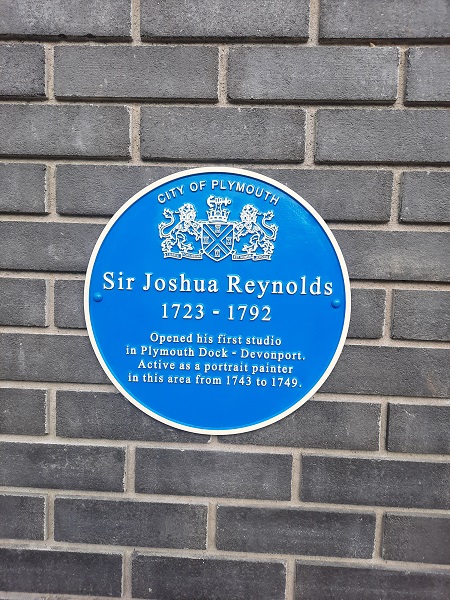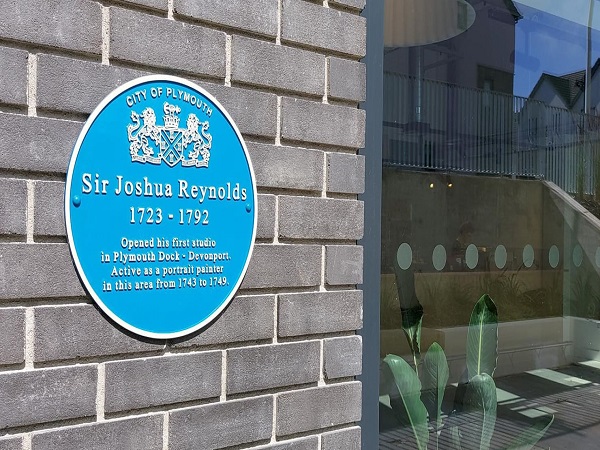Sir Joshua Reynolds Plaque ~ Devonport, Plymouth.
Client : Plymouth City Council.

Plymouth City Council contacted us and asked if we could install a ‘Blue Plaque’ relating to the artist Sir Joshua Reynolds.

These small blue information plaques are seen all over the United Kingdom and the history behind them go back a long way. It started off as the London blue plaques scheme beginning 150 years ago and is the oldest scheme of its kind in the world. Blue plaques have played an important role in the history of the conservation movement. The scheme pre-dates the foundation of both the Society for the Protection of Ancient Buildings (1877) and the National Trust (1895). The idea of a commemorative plaque scheme was first put to the House of Commons by William Ewart MP in 1863. Three years later the Society of Arts (later the Royal Society of Arts) took the scheme on. These iconic blue plaques are a permanent sign installed in a public place in the United Kingdom and elsewhere to commemorate a link between that location and a famous person, event, or former building on the site, serving as a historical marker. The term is used in the United Kingdom in two different senses. It may be used narrowly and specifically to refer to the ‘official’ scheme administered by English Heritage, and currently restricted to sites within Greater London, or it may be used less formally to encompass a number of similar schemes administered by organisations and councils throughout the UK. The plaques erected are made in a variety of designs, shapes, materials and colours, most are blue, others are not. However, the term ‘Blue Plaque’ is often used informally to encompass all such schemes. The small blue plaque we were asked to fix was about 12 inches (300mm) in diameter, cast in aluminium and consisted of a few words about the artist.

The words on the plaque say
‘Joshua Reynolds
1723 – 1792
Opened his first studio in Plymouth Dock – Devonport. Active as a portrait painter in this area from 1743 – 1749.’
Joshua Reynolds was born in Plympton, Devon in 1723, as the third son of the Reverend Samuel Reynolds, Master of the Plympton Free Grammar School. Having shown an early interest in art, Reynolds was apprenticed in 1740 to the fashionable London portrait painter Thomas Hudson, who like Reynolds had been born in Devon. Although apprenticed to Hudson for a period of four years, Reynolds remained with him only until the summer of 1743. Having left Hudson, Reynolds worked for some time as a portrait painter in Plymouth Dock which today is known as Devonport. At that time Plymouth Dock was the site of the most modern and technologically advanced Naval port in the whole of Europe and with it came a new modern town that grew up alongside. It was an area of well planned streets that were wide and imposing and paved with limestone from the local quarries, The town was still very small when Reynolds arrived, consisting of about seven streets concentrated around the entrance to the dockyard itself. The main one was Fore Street where Joshua had settled and it was along this street that all those having business in the dockyard, be they naval or civilian, had to pass. A perfect location for an ambitious young man such as Reynolds, as this was an area on the up and the perfect place for him to ply his trade amongst the naval officers, who at that time were either aristocrats or gentry, the very people who would consider having their portraits painted, and from here Reynolds went on to become one of the greatest painters of the age. Any building in this area associated with Joshua Reynolds had long been demolished so it was decided that the site for the installation was to go on the wall of the old Devonport Market building in Devonport, Plymouth.



The earliest published description of what was then the Plymouth-Dock Market dates from 1812, but the foundation stone of the present building we see today was laid on Tuesday the 13th of July, 1852 by Mr James Saint Aubyn, Lord of the Manor. It was designed in the Italian style by the architect John Foulston and built by a Mr Clift at a cost then of £17,944 7s 7d and constructed using Plymouth limestone and granite from Dartmoor. The tower at the South end of the butchery is in the style of an Italian campanile and stands 124 feet up to its weathervane. The tower contains a bell and each face displays a clock. The building has three iron-trussed roofs with iron lattice balconies supported on slender iron columns with palm-leaf capitals. It is particularly noteworthy for its cast iron staircase and galleries. The Ministry of Defence annexed the building and the land around it behind a high security wall in 1956 when it then became part of Devonport Dockyard with no public access. It became a Naval Sail Store for the Principal Supply and Transport Officer. Only the Southernmost building has survived, along with the clock tower in the North-West corner, between Cumberland Street and Barrack Street. In 2013 the Ministry of Defence transferred South Yard back into the public domain for re-development and the market building was included in that handover.


In 2013 the grade II listed market hall went through a £7.6 million restoration project transforming it into a state of the art digital media hub, the first of its kind in Europe which includes a 15 meter immersive video dome. The plaque is located next to the main entrance of the new market hall’s cafe.


